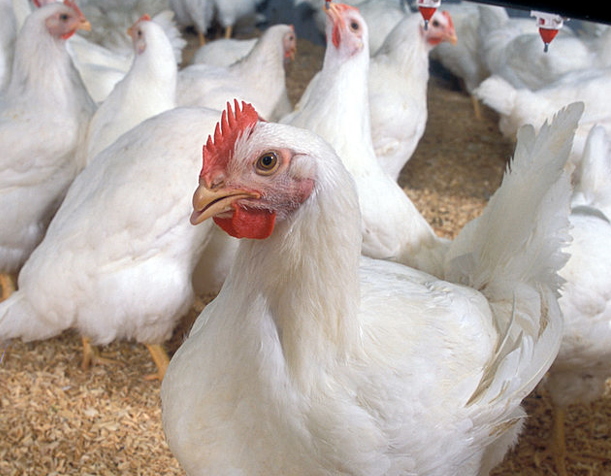



The critical role of farm disinfection to curb global antibiotic use and AMR
Role of biosecurity and disinfectionWhile the livestock sector is on the right track, there is potential to further reduce the use and dependency of antibiotics. Disinfection is one of the most effective and easy interventions to achieve this.
The use of antibiotics has decreased and is now lower in food-producing animals than in humans, according to the 2021 report from the European Food Safety Authority (EFSA), the European Medicines Agency (EMA) and the European Centre for Disease Prevention and Control (ECDC). This is good news and shows that the measures taken by the European Union (EU) such as the 2001 ban on preventive use of antibiotics in farm animals, as well as the result of all efforts made in better animal nutrition, vaccination, and better farm management are proving to be effective. Since the EU ban in 2001, other regions in the world, including the United States and Asia, have been working on the curb of antibiotics in livestock production as well. The measures are focused on responsible use of antibiotics, meaning that antibiotics can still be used for treatment of diseases, as animals have the right for good treatment when they are ill, rather than using antibiotics to prevent diseases or cover up bad welfare or poor farm management practices.
AMR is high on the agenda
While the EU ban in 2001 is being considered a milestone for more sustainable and healthier livestock production, routine application (including overuse and misuse) of antibiotics for disease control and treatment is still seen, which may contribute to the emergence and spread of antimicrobial resistance (AMR). AMR occurs when bacteria, viruses, fungi, and parasites change over time and no longer respond to medicines making infections harder to treat and increasing the risk of disease spread, severe illness and death. AMR is linked with several Sustainable Development Goals (SDGs) of the United Nations and therefore high on the agenda to tackle. Not only because AMR is a global public health and societal issue, but it can also compromise the achievement of the SDGs, affecting health security, poverty, economic growth, and food security.

Increased focus on disease prevention
The continuing threat of disease outbreaks and the priority of AMR urges the livestock sector to take action to mitigate, prevent and control antibiotics even more than we already do. And this is possible because there is room to further decrease antibiotic use. This is encouraged with the new EU Animal Health Law, that came into effect in April 2021, and states that only sick, individual animals (and not whole herds) may be administered antibiotics. The new EU legislation also strongly embraces the One Health approach as a way to rethink the livestock production system, as well as better early detection and control of animal diseases. In practice this means that we need to focus on a more sustainable and healthy way of producing animals.
The application of natural antimicrobials and immune stimulants such as plant extracts, yeast extracts and probiotics are great nutritional tools to keep the animal healthy and performing and reduce the dependency on treatment of antibiotics. The same is true for biosecurity and routine disinfection, which are considered strong backbones of effective disease prevention and hence the formation of AMR.
Role of biosecurity and disinfection
The use of a farm disinfectant is one of the most effective and easiest ways to prevent animal diseases and reduce antibiotic use. It is all about keeping pathogens under control. But there are different approaches and products on the market. Halamid® is a unique product and this oxidative disinfectant has been specifically developed to be powerful and mild at the same time. It is safe for animals, humans, and the environment. The mode of action of Halamid® is based on an irreversible destruction of the envelope and cell material of microorganisms. This oxidising action ensures that microorganisms are effectively killed and do not have a chance to develop resistance, directly helping to reduce the formation of AMR on farms. In addition, because Halamid® covers all major pathogens and only one application round is needed, the product is more efficient from a time and dosage perspective, compared to other disinfectants on the market.
Conclusion
While the livestock sector is on the right track to improve and take responsibility, there is potential and need to further reduce the use and dependency of antibiotics. This is because there is still large variation in antibiotic use and application of biosecurity measures in different regions and countries and AMR is still not under control. The EU is considered a frontrunner in antibiotic legislation and has taken the next step with the new EU Animal Health Law. Yet, in some regions of the world, preventive application of antibiotics still exists. Increased efforts on more sustainable and healthy livestock production will not only profit farmers and animals, but also contribute to the reduction of AMR, which is being considered one of the main human health threats today. The interventions that are applied on farms should therefore be a powerful mix of farm management practices, high quality diets and effective and successful biosecurity and disinfection protocols.
Halamid® is a universal biocide, readily biodegradable, safe for humans, animals, and the environment. It is built on many years of expertise and helps to contribute to less antibiotic use and AMR. Get in touch to learn more.









